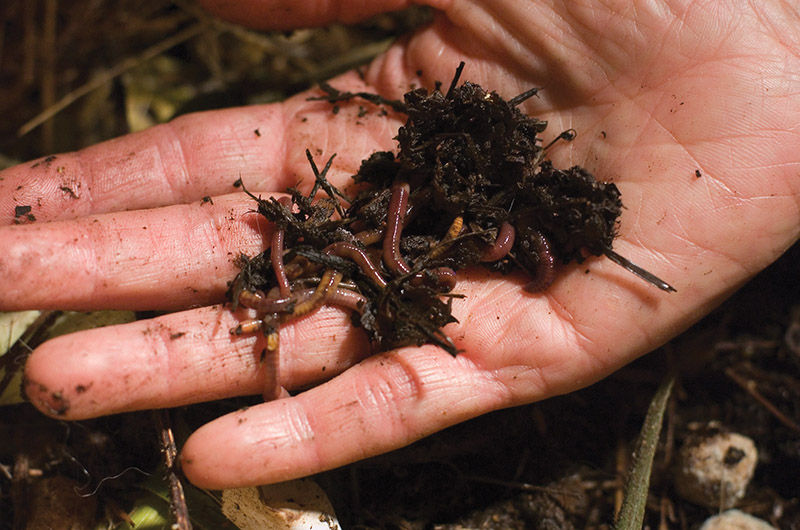Red wigglers: Recycle waste effectively
Utilizing Red Wigglers for Reliable Organic Garbage Disposal
Making use of red wigglers for organic waste disposal presents an engaging approach to managing food scraps while advertising ecological sustainability. These worms not just boost waste decay yet likewise yield beneficial worm castings, which can substantially enhance dirt health and wellness. Their capacity to process huge volumes of natural material with marginal effort placements them as an accessible option for households and areas alike. Understanding the nuances of establishing up a successful worm bin and maintaining an optimum habitat is vital for maximizing their benefits. The following actions in this process may surprise you.
Advantages of Using Red Wigglers
Among one of the most engaging benefits of making use of red wigglers for organic waste disposal is their remarkable effectiveness in composting. These worms, clinically referred to as Eisenia fetida, are especially adapted for breaking down organic materials, allowing them to refine waste approximately two times their body weight daily. This quick disintegration not only speeds up the composting procedure however likewise creates nutrient-rich worm castings that substantially boost soil quality.
Additionally, red wigglers add to a reduction in landfill waste. By diverting organic materials from landfills, they aid decrease methane discharges-- a potent greenhouse gas. This ecological advantage is crucial in the fight versus environment adjustment.
Additionally, red wigglers are low-maintenance and can flourish in numerous settings, making them accessible for both amateur and skilled composters. Their capability to duplicate quickly ensures a stable population, assisting in continuous waste processing.
Establishing Your Worm Bin
Producing a reliable worm bin is crucial for making the most of the benefits of composting with red wigglers. Guarantee the bin has adequate drain holes to stop excess moisture, as red wigglers prosper in a damp yet not soggy atmosphere.
(Western North Carolina Bait)Next, prepare the bed linens product, which functions as the worms' environment and food resource. Shredded paper, cardboard, and coconut coir are exceptional options. Aim for a bedding depth of around 4 to 6 inches. The container should be positioned in a dark, temperature-controlled area, preferably between 55 ° F and 77 ° F, to maintain worm task.
As soon as the container is established up, present the red wigglers, permitting them to accustom to their brand-new atmosphere. A well-kept container will not just support the health and wellness of the worms however also help with effective decay of organic waste.
(redworms for composting)
What to Feed Red Wigglers
An understanding of the appropriate diet for red wigglers is vital for maintaining a healthy worm populace and maximizing composting performance. These items not just give vital nutrients yet likewise contribute to the moisture balance within the worm bin.
It is essential to avoid particular foods that can harm the worm populace. Red wigglers ought to not be fed meat, milk items, oily foods, or processed products, as these can draw in parasites and develop undesirable smells. red wigglers. In addition, citrus fruits and zesty foods must be lessened, as their acidity can be harmful to worms
Keeping an eye on the worm container for food consumption prices will certainly help guarantee that red wigglers are getting an ample diet while preserving a reliable composting environment. Appropriate feeding methods are crucial for promoting a growing ecosystem within the worm bin.
Preserving Your Worm Environment
A properly maintained worm habitat is crucial for the health and wellness and performance of red wigglers. To make certain optimal conditions, it is important to keep an eye on temperature level, moisture, and aeration within the worm container. Red wigglers prosper in a temperature level variety of 55 to 77 degrees Fahrenheit. Exceeding this range can stress the worms, so it's essential to place the bin in a suitable location away from direct sunlight and extreme temperatures.
A great rule of thumb is to keep dampness at around 70% to 80%. If the bedding comes to be also damp, it can lead to anaerobic conditions that are damaging to the worms.

Utilizing Worm Spreadings in Horticulture
Rich in nutrients and beneficial microbes, worm castings act as an exceptional organic fertilizer for gardening. Produced through the digestion procedures of red wigglers, these spreadings include a variety of crucial nutrients, consisting of nitrogen, phosphorus, and potassium, which advertise durable plant development. Unlike synthetic fertilizers, worm castings provide a slow-release system, guaranteeing that nutrients are offered to plants over a prolonged period, thus minimizing the danger of nutrient leaching and dirt exhaustion.
In addition to nutrient web content, worm castings enhance dirt framework and aeration, boosting wetness retention and drainage. The microbial life existing in worm castings aids to reduce pathogens and advertises a healthy dirt community, more profiting plant health. When included into the soil or used as red wiggler worms a leading dressing, worm spreadings can considerably enhance seed germination rates, origin advancement, and total plant vigor.
For optimum results, garden enthusiasts ought to use worm castings at a price of 1-2 inches per square foot, mixing them into the dirt or integrating them right into potting mixes. Generally, using worm spreadings is an eco-friendly technique to enriching soil fertility and making certain flourishing yard environments.
Final Thought
